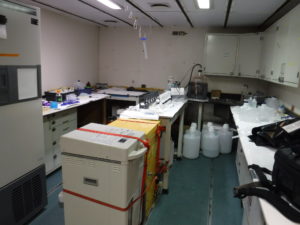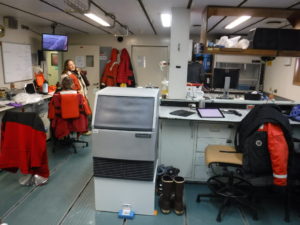REMIXED
Research Examining MIXotrophic Ecology and Diversity – what does that actually mean and why are we interested? Traditionally, microbial eukaryotes (algae and protists – not bacteria) are considered either phototrophic (use sunlight to grow) or heterotrophic (eat prey to grow). Mixotrophy refers to an organism’s ability to utilize a combination of these trophic strategies. We are specifically interested in the micro-algae that are able to eat prey. They are not unique to the Antarctic, but this alternative nutritional strategy may help them survive several months of darkness in the polar winter. There is also growing interest in understanding the role that these organisms play in the transfer of nutrients through the food web. In my post on krill I wrote about algae being the “grass” of the ocean, but not all algae are equal in terms of their nutritional quality – kind of like iceberg lettuce versus kale. And just like us, heterotrophs can be picky about what they eat. My grandfather used to say that not even rabbits would eat kale (this was a very long time ago, before kale became a “superfood”).
BUT, the reason we are studying the mixotrophs in Antarctica is to understand what species are actually using this strategy, how their abundances change in different seasons, what conditions stimulate their grazing activity, and how much they contribute to photosynthesis versus how much they eat. Different mixotrophs are triggered to graze by different environmental conditions, and they will eat different amounts. They will also differ in the amount that they rely on photosynthesis versus grazing. Ultimately this means that their nutritional quality is likely different from “regular” algae, and perhaps better (or worse) for organisms higher in the food web.
So, how do we do this? We are running several different experiments here, but I’m only going to tell you about how we determine the abundance of active mixotrophs in this post.
First, we collect water – remember the CTD? Well, it’s still not working, so we’re using those backup buckets (we named them “Bob” – see picture below).
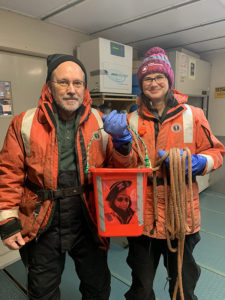
The water is then placed into clear plastic bags, and fluorescent plastic microspheres (ok, beads) are added. These are about the size of bacteria (0.5 micrometers in diameter), and yes, many of the “grazers” are stupid enough to eat them. At least briefly. Once they realize the beads are not food, they spit them out. We allow the cells to eat for only 30-45 minutes, then preserve the sample and collect the cells on filters. Now we head to the microscope where we use fluorescence to examine the sample. Algae contain chlorophyll, and this fluoresces red. The DNA is stained with a chemical that makes it look blue/white. And the beads, they are bright green. Take a look at the image below and see if you can identify the mixotrophs – there are at least two. They will have a red chloroplast, a blue nucleus and a small green (or yellow-green) dot. The answer will be in my next post.
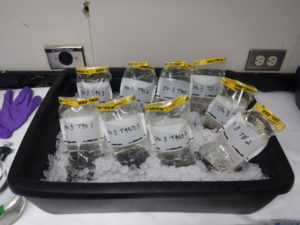
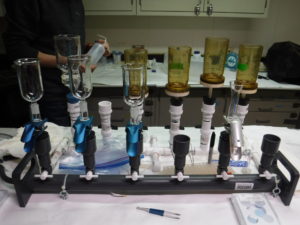
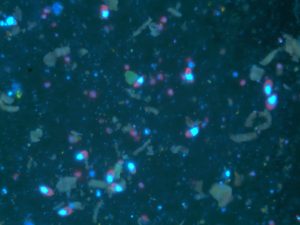
We do lots of these experiments, with replicates, and we count the number of mixotrophs, as well as the number of phototrophs and heterotrophs to get estimates of how many there are. The experiments go pretty quickly, but we spend A LOT of time at the microscope counting cells.
For those of you wondering what a lab on a ship looks like, I’ve included pictures of our space. We are in the Hydro Lab, in case you want to go to the Antarctic program site and look up the ship layout. It’s quite spacious, although all 4 of us usually end up over in the far corner at several times during the water processing!
